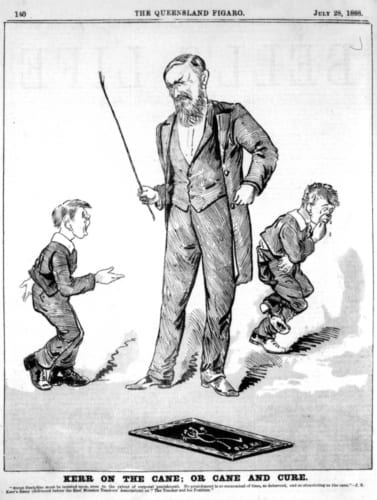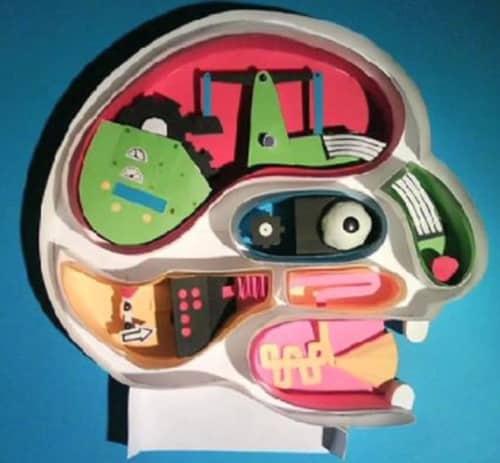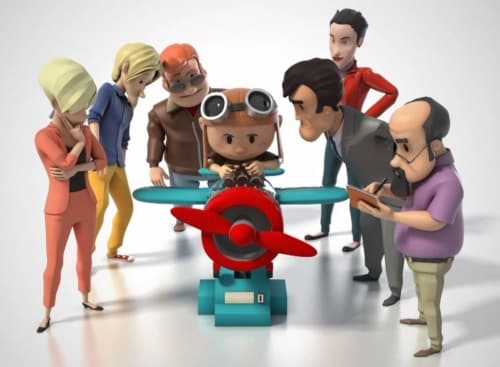Approach discipline from a supportive point-of-view to better manage risk
by Tom Strasburger
 Schools around the country began implementing zero-tolerance policies in the mid-1990s to curb drug use and the possession of weapons on school grounds. Now zero-tolerance policies have spread to other student safety areas, including alcohol use, fighting, bullying and more. If a student is caught committing such an act, they often are immediately suspended or expelled – no questions asked.
Schools around the country began implementing zero-tolerance policies in the mid-1990s to curb drug use and the possession of weapons on school grounds. Now zero-tolerance policies have spread to other student safety areas, including alcohol use, fighting, bullying and more. If a student is caught committing such an act, they often are immediately suspended or expelled – no questions asked.
Zero-tolerance policies were implemented with the best of intentions and while they sound like a good idea, scholars are now rethinking their effectiveness. The American Psychological Association (APA) formed the Zero Tolerance Task Force to examine research on the disciplinary approach to determine if common assumptions about its effectiveness are true. Some of the beliefs the task force investigated included:
- Zero policies increase the consistency and clarity of school discipline.
- Removing students who violate school rules creates a school climate more conducive to learning.
- Swift and certain punishments can deter misbehavior, thus improving overall student behavior and discipline.
What the task force found, however, was that much of the data actually contradicted these assumptions. First, zero-tolerance policies do not seem to increase consistency of school discipline. Inconsistencies in discipline are due to characteristics of the schools themselves, their personnel and students’ behaviors or attitudes. Second, zero-tolerance policies tend to increase suspension and expulsion rates, which negatively affect school climate ratings, student achievement and therefore overall scores. Finally, zero-tolerance policies do not reduce disruption or deter the behaviors they were meant to address. In fact, the APA says suspensions and expulsions are moderately associated with a higher likelihood of students dropping out of school or failing to graduate on time.
Most importantly, when students are suspended or expelled, they are missing crucial instruction time. When they get back to the classroom, they can feel behind or lost, which can further contribute to misbehavior. According to numerous civil rights organizations, just one out-of-school suspension in a student’s freshman year of high school doubles his or her risk of dropping out before graduation. And according to the American Civil Liberties Union (ACLU), students who are suspended or expelled for a discretionary violation are nearly three times more likely to be in contact with the juvenile justice system the following year.
 What makes zero-tolerance policies so destructive for students is they do not take into consideration the situation that caused the behavior. For example, should a student be suspended for biting a pastry into the shape of a gun? No, but it has happened. The discipline approach also does not take into account the student’s past indiscretions, or any mental health issues or special needs the student has that may have led the student to misbehave. For example, should a student on the autism spectrum who gets overstimulated and acts-out by hitting another student get suspended? No, but it has happened.
What makes zero-tolerance policies so destructive for students is they do not take into consideration the situation that caused the behavior. For example, should a student be suspended for biting a pastry into the shape of a gun? No, but it has happened. The discipline approach also does not take into account the student’s past indiscretions, or any mental health issues or special needs the student has that may have led the student to misbehave. For example, should a student on the autism spectrum who gets overstimulated and acts-out by hitting another student get suspended? No, but it has happened.
Dismissing students who misbehave without helping them work through the underlying reason for the behavior is providing a disservice to the student. Not only are they not getting the support they need, it is putting them at-risk of misbehaving again which could prematurely end their educational career and put them in contact with the criminal justice system.
From Ineffective to Supportive
Districts across the country are very focused on Individualized learning when it comes to academics, so shouldn’t they also take a personalized approach to discipline? Instead of blanket punishments for bad behavior, schools should create a system that allows administrators to assess each case and each student involved to get to the root of the problem.
In 2013, Ohio’s State Board of Education passed a policy advising all districts to implement a non-aversive effective behavioral system such as Positive Behavioral Intervention and Supports (PBIS) in the hope that it would decrease, and hopefully eliminate, severe punishments including suspensions or expulsions, restraint and seclusion, and the intervention of School Resource Officers (SROs) in student discipline.
According to PBIS.org, a PBIS system is “a framework or approach for assisting school personnel in adopting and organizing evidence-based behavioral interventions into an integrated continuum that enhances academic and social behavior outcomes for all students.”
 So what does a PBIS system look like at the school level? Administrators and teachers need to define a set of student behavior expectations, and then share them with the student body. These expectations should be easy for all students to understand and should be promoted by all faculty and staff consistently and frequently.
So what does a PBIS system look like at the school level? Administrators and teachers need to define a set of student behavior expectations, and then share them with the student body. These expectations should be easy for all students to understand and should be promoted by all faculty and staff consistently and frequently.
What also needs to be spelled out to students is what happens when a student does and does not meet the expectations. Students who meet expectations will be praised and recognized for their behavior, while students who do not meet expectations will face a consequence. To help facilitate this, teachers and administrators need the following:
- Training on how to support students with behavioral problems
- A reporting process to properly record all student behavior, both good and bad
- An administrative team dedicated to analyzing data for potential trends, which can be used to create preventative actions for problem behaviors
- A way to reward positive behavior
Training: Misbehavior can stem from many different factors, so it is important for educators to be trained on a variety of issues. Relevant training topics include the cycle of acting out, the warning signs of child abuse, bullying, depression or discriminatory harassment, and more. If a teacher is working with a student with special needs or a behavior disorder, it is helpful for the teacher to consult with the student’s case manager to better understand their specific needs and triggers.
Reporting: It is crucial that teachers and administrators report ALL student behavior, including behavior that results in immediate action from administration, behavior that is just disruptive and positive behavior. By reporting all behavior, a school is able to create a comprehensive record for each student. This data can help administrators decide on appropriate interventions to support the student. Using an online reporting tool makes it easy for teachers to report all behavior, whether positive or negative. Additionally, records being stored online are easy to access and reference.
 Data: An online repository of student behavior reports allows administrators to identify trends in student behavior. Is there an uptick of referrals coming from a specific teacher? Is there an increased amount of misconduct happening in a certain part of the building or at a specific time? Has a student been acting out of character? These are all things administrators are able to identify, and respond to, if all behavior is reported. They can use this trend data to determine prevention strategies. Maybe a teacher who is submitting many referrals simply needs some professional development on classroom management techniques. Maybe a faculty member needs to monitor a specific hallway in between periods to deter misconduct, or maybe a student who is acting out is facing trauma at home and needs support services. These are all simple strategies that can make a difference in the overall climate of the school.
Data: An online repository of student behavior reports allows administrators to identify trends in student behavior. Is there an uptick of referrals coming from a specific teacher? Is there an increased amount of misconduct happening in a certain part of the building or at a specific time? Has a student been acting out of character? These are all things administrators are able to identify, and respond to, if all behavior is reported. They can use this trend data to determine prevention strategies. Maybe a teacher who is submitting many referrals simply needs some professional development on classroom management techniques. Maybe a faculty member needs to monitor a specific hallway in between periods to deter misconduct, or maybe a student who is acting out is facing trauma at home and needs support services. These are all simple strategies that can make a difference in the overall climate of the school.
Positive Reinforcement: Rewarding positive behavior shows that administration is invested in supporting students and the recognition makes it more likely that positive behavior will be repeated. Recognizing positive behavior is as easy as allowing extra playtime, posting students’ names on a bulletin board, hosting assemblies or breakfast celebrations or giving certificates, gift cards or school supplies to well-deserving students.
Supporting Students
Unlike a zero-tolerance approach to discipline, a PBIS system turns misbehavior into a learning opportunity. Students are allowed to learn from their mistakes or get the help they need before entering “the real world,” which is what education is all about.
Author
Further Reading
- NEA – Alternatives To Zero Tolerance Policies
- Atlanta Journal-Constitution – Georgia Supreme Court: no tolerance for zero tolerance fighting policies
- The Advocate – Tossing students out schools? Louisiana state panel discussing new rules
